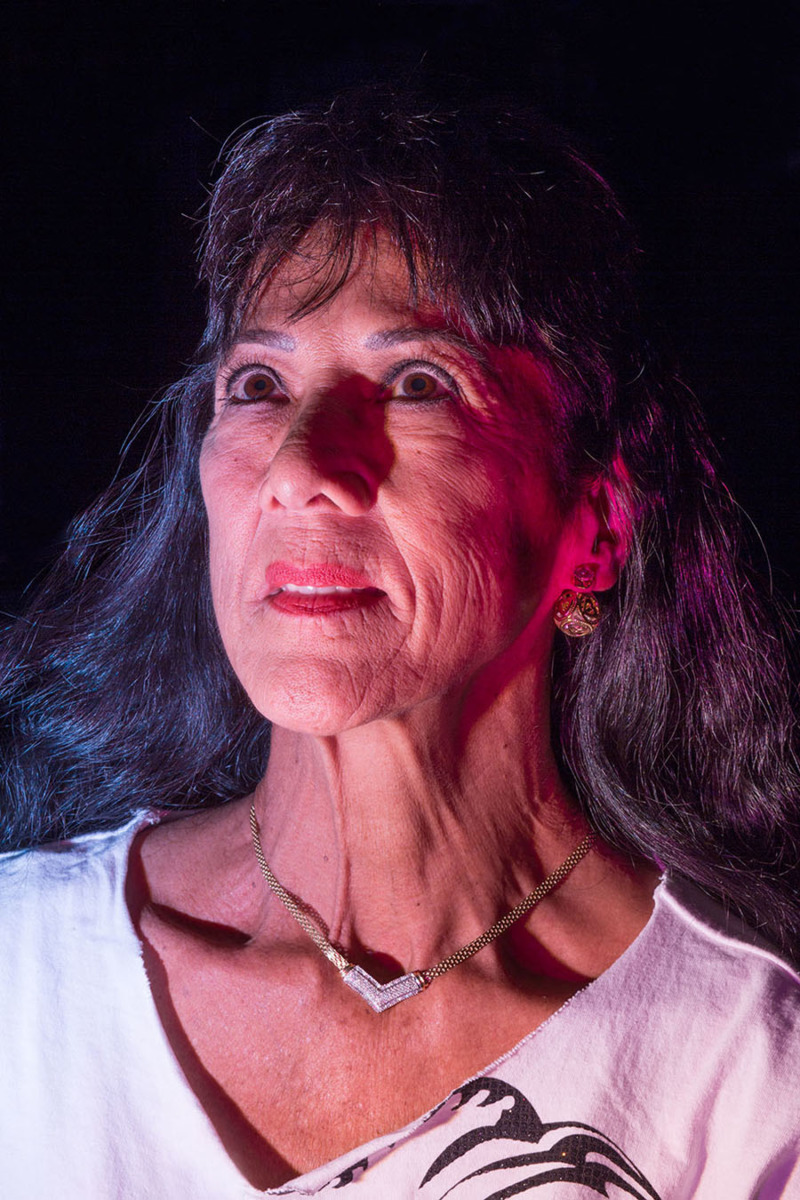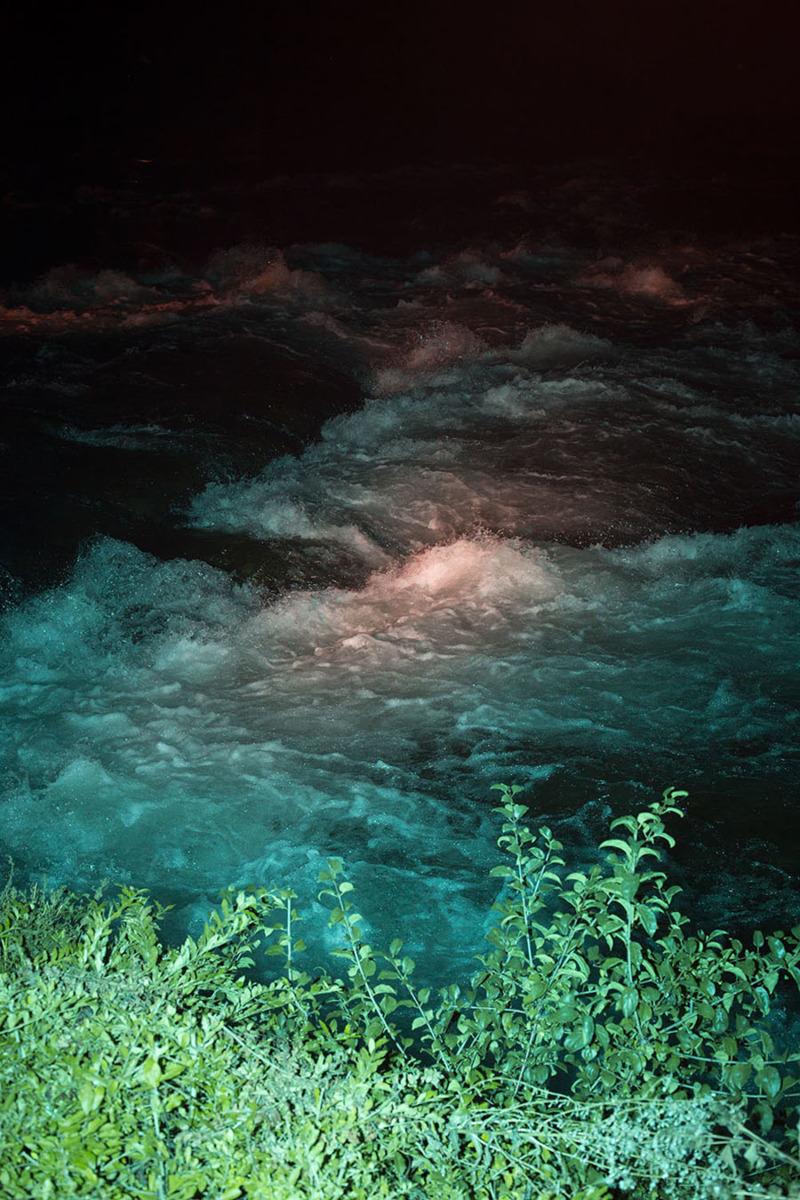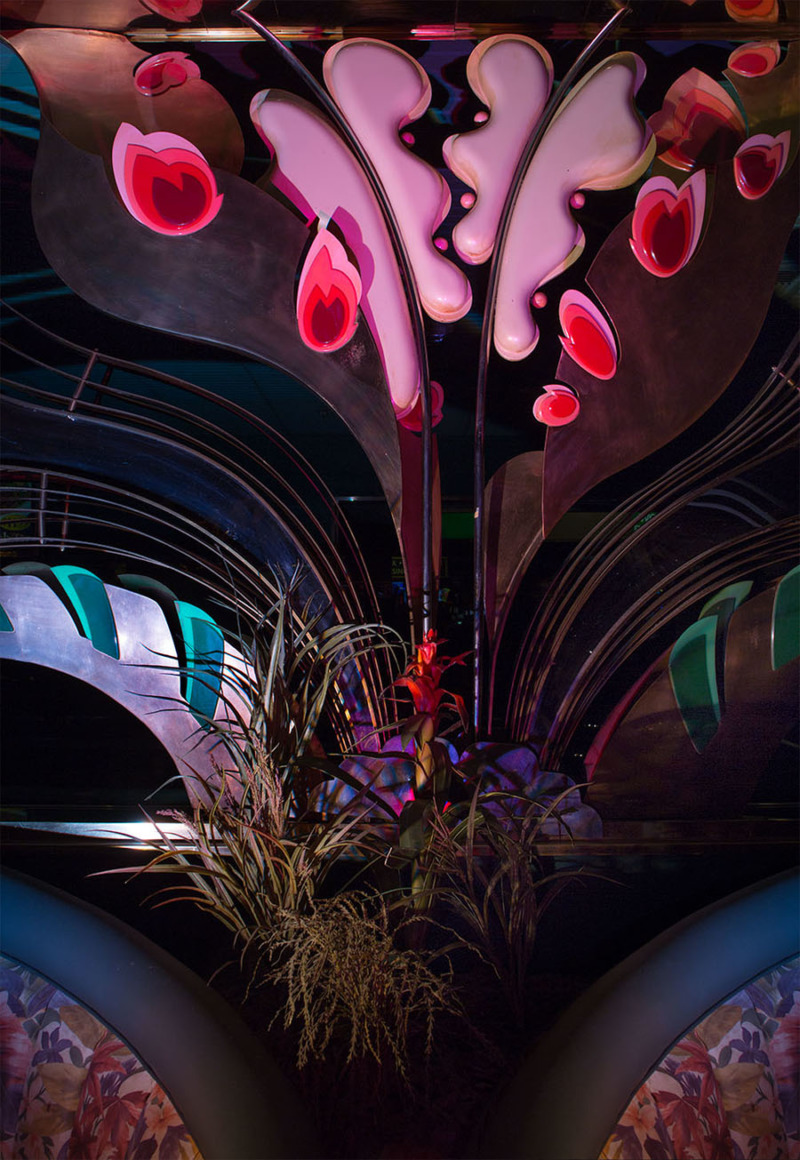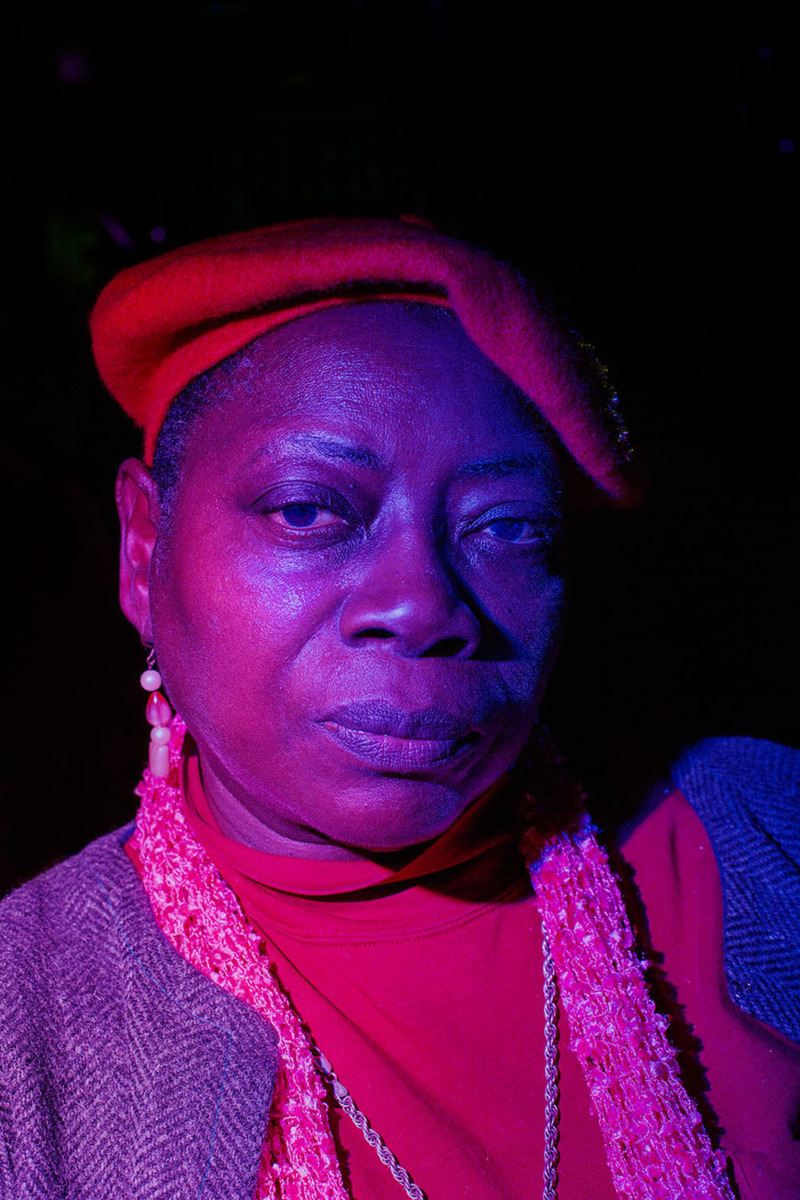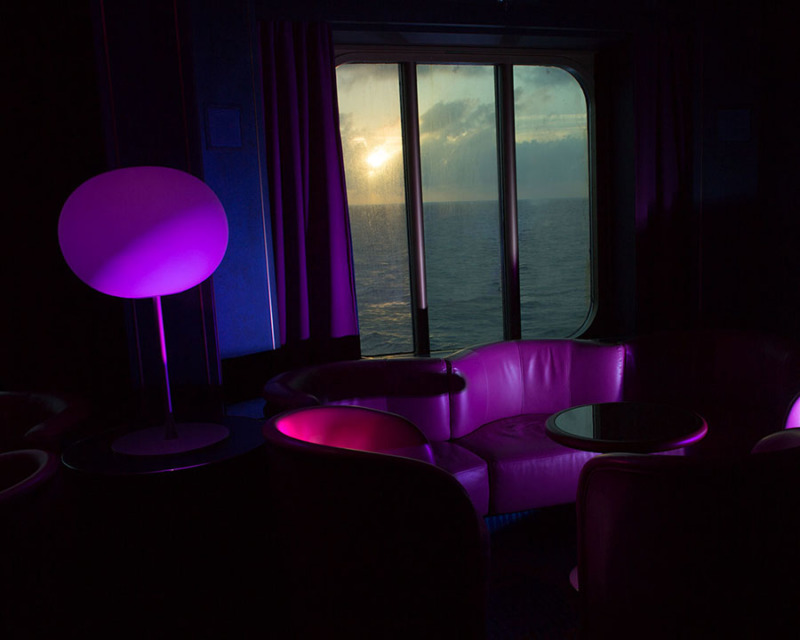Interview – Courtney Asztalos
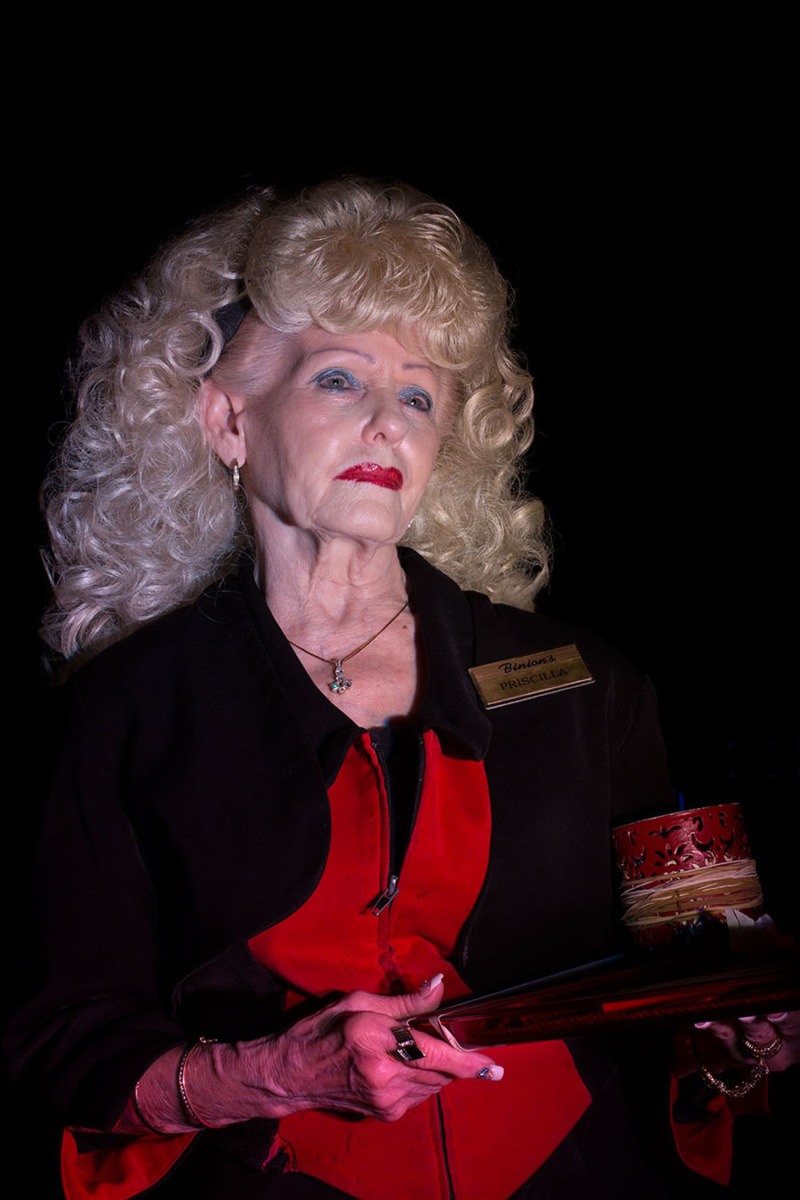
In her new photographic series, Purple Domino, artist Courtney Asztalos wanders through America’s vast terrain of fabricated fantasy worlds in search of a bygone era where glamour, chance and indulgent entertainment once reigned. Within these dim hallways, casinos and lounges, Asztalos constructs an uncanny backdrop reminiscent of 1960s science fiction cinema, while bringing to light the lost dreams and utopian fragments of these spaces. Here, we are asked to enter a mystifying realm, one occupied by women who dwell under its artificial glow and velvet curtains. And as though seduced by the artist’s camera, the women in these photographs emerge from the dark, luminous from their storied presence. It is a strange world, one that teeters between the forgotten and the transcendent, all the while unravelling an atmosphere of imagined escape.
Your home state of Florida is a hidden gem, and I feel photographers haven’t truly tapped into its ethos just yet. It is a place with a rich cross-section of diverse cultures, fantasylands, swamps, and even southern sensibilities. I’m curious to know how growing up in Florida shaped you as a person, as well as your photographic practice?
I grew up in the Florida Panhandle—which is a lush and magical universe. I witnessed strange and compelling moments of visual drama happening constantly which fuelled my curiosity for image-making— i.e. strange wildlife scampering against a backdrop of dark storm clouds, sunburned mountain-bike-drifters, and thrift-shops that doubled as homes for runaway girls. I quickly learned that life was much more exciting with a camera and the ability to meet and photograph strangers while hearing their stories and mysteries. The air was often so thick with water that it was like walking around in a terrarium. I frequented Wakulla Springs growing up and even now go back as much as I can—it was once the backdrop for the movie the Creature from the Black Lagoon. There is a palpable tension between the cinematic elements of FL, the characters, the tragedies, and the fragility of the landscape. The Wakulla Springs water used to be crystal clear and you could see the mouths of strange caves deep under the water even when high above from the swimming platform. Now the water is brown from all of the run-off fertilizer.
My grandparents and our family relocated from Maryland when I was young. Back then and even now, Florida stood metaphorically to my family and a lot of people who move there as a paradise. Although what often lies behind the facade of the ‘paradise of Florida’ is ultimately the violence in its origin as well as in America’s ongoing history. This is often overlooked or forgotten because of the commodification of Florida—i.e. the horror and history of the Seminole Wars, the Rosewood Massacre, the destruction of the Everglades, etc. There are many things that haunt Florida. The Fountain of Youth has never been found but in its mythic place: theme parks, casinos, cruises, and soon Margaritaville retirement homes.
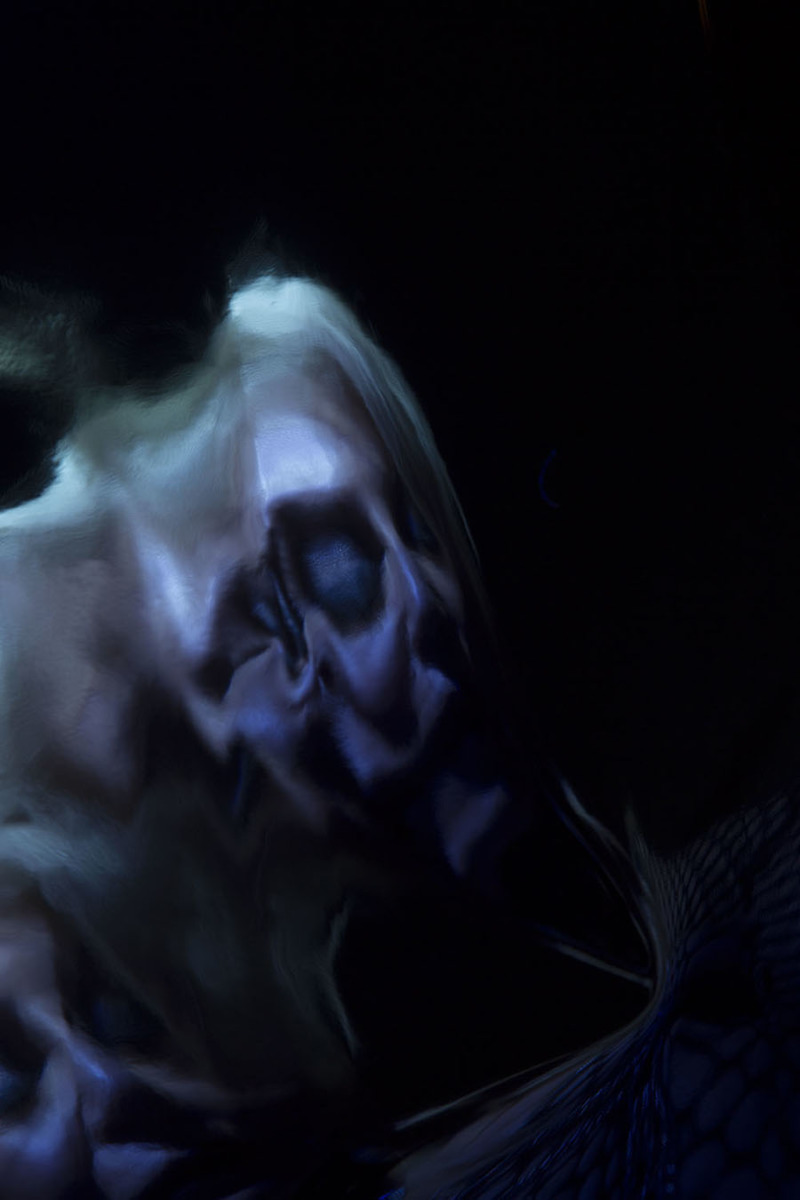
Purple Domino is to a large extent about the under-representation of women, ageing, and the fragments of utopia that contemporary American culture offers as an alternate reality through fictional landscapes and consumerism. There is a complex layering of concepts behind this work, and I would like to hear you deconstruct it a bit for us.
My own method of working has often come from my curiosity for who and what aspirations exist within the dizzying and baffling terrains of consumer and tourist spaces. In part because I grew up around the tension between the fading of ‘Old Florida’ and the evolving façade of corporate stylised ‘paradise’—often witnessing the behaviours, fashion, and consequences of people orbiting in and around both worlds. I watched as my mother was a travel agent who coordinated people’s dream vacations before the Internet eclipsed her profession. These channels of escape (cruises, casinos, etc) allow people to break with their daily routines in a way that allows them a vacation in reveries and desire. With Purple Domino, this curiosity within the raw space of the casino as a parameter led me most importantly to these women while inside.
My own method of working has often come from my curiosity for who and what aspirations exist within the dizzying and baffling terrains of consumer and tourist spaces
There is a sense of vulnerability in the women you photograph, but they also present a spiritual and at times mythic power. Where does this line blur for you and how do you view the representation of the women in this work?
Their power comes from their full participation in the photographs. Their makeup, jewellery, perfume, and fashion speak to coded choices and presents femininity without its bondage to youth. They are from a time in which they first knew the casino as a glamorous stage—a place in which people performed and participated through fashion, gesture, and pageantry. Here they are performing in the same way. The aspirational atmosphere provides longing with the space to perform as personal theater.
The interiors and landscapes your subjects are placed in are quite surreal. They remind me of Sci-Fi cinema and I’m not sure I can totally place them in any distinct representation of reality. Will you expand upon the influence Science Fiction has on your work and also to the importance of approaching this work with cinematic sensibilities?
I personally gravitate to and have always fallen in love with the details of Sci-Fi movies like TerrorVision, Barbarella, and Vegas in Space. The interesting thing about Sci-Fi to me is that it is a closed system—it operates according to the rules of its own world. The casino is quite like this and there is often another time and space to how it operates. Inside, there are no clocks, strange adornments paired with vertiginous patterns, artificial scents fill the air system, and it is open 24 hours—seemingly infinite. It begins to function at full speed only when one breaks from their own life and immerses themself within the space.
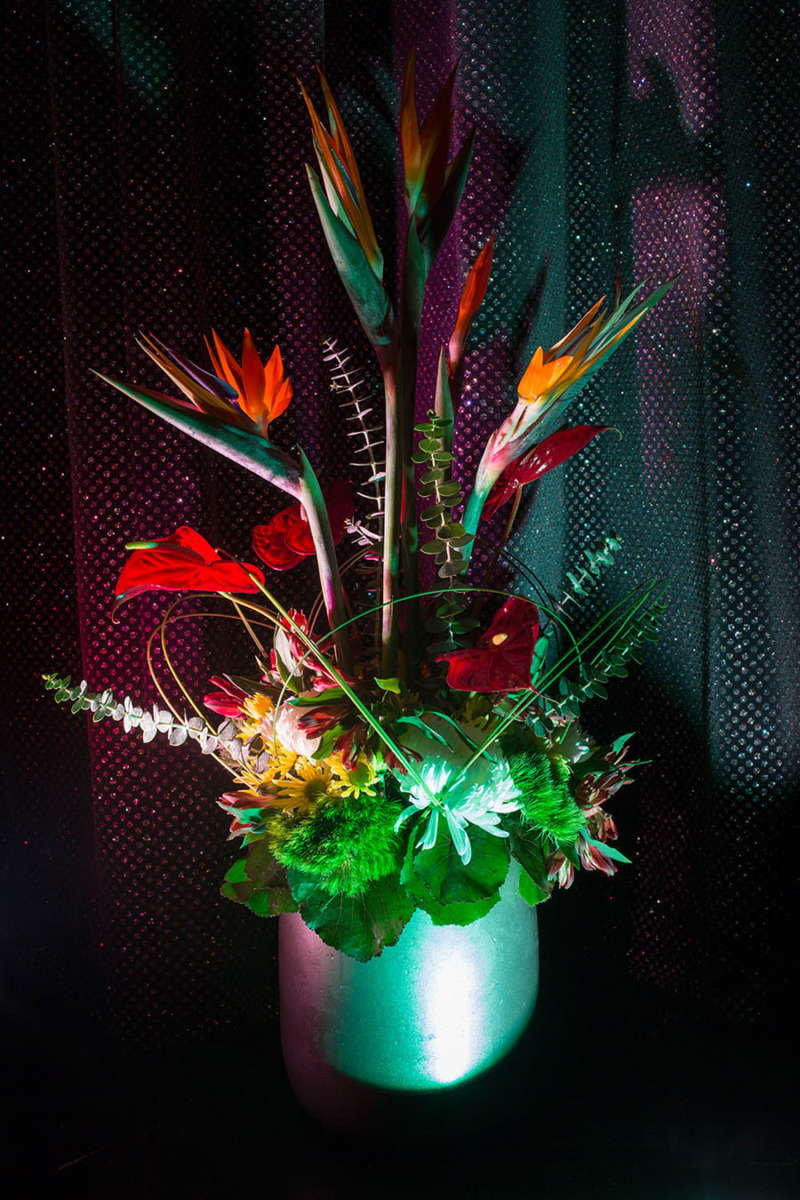
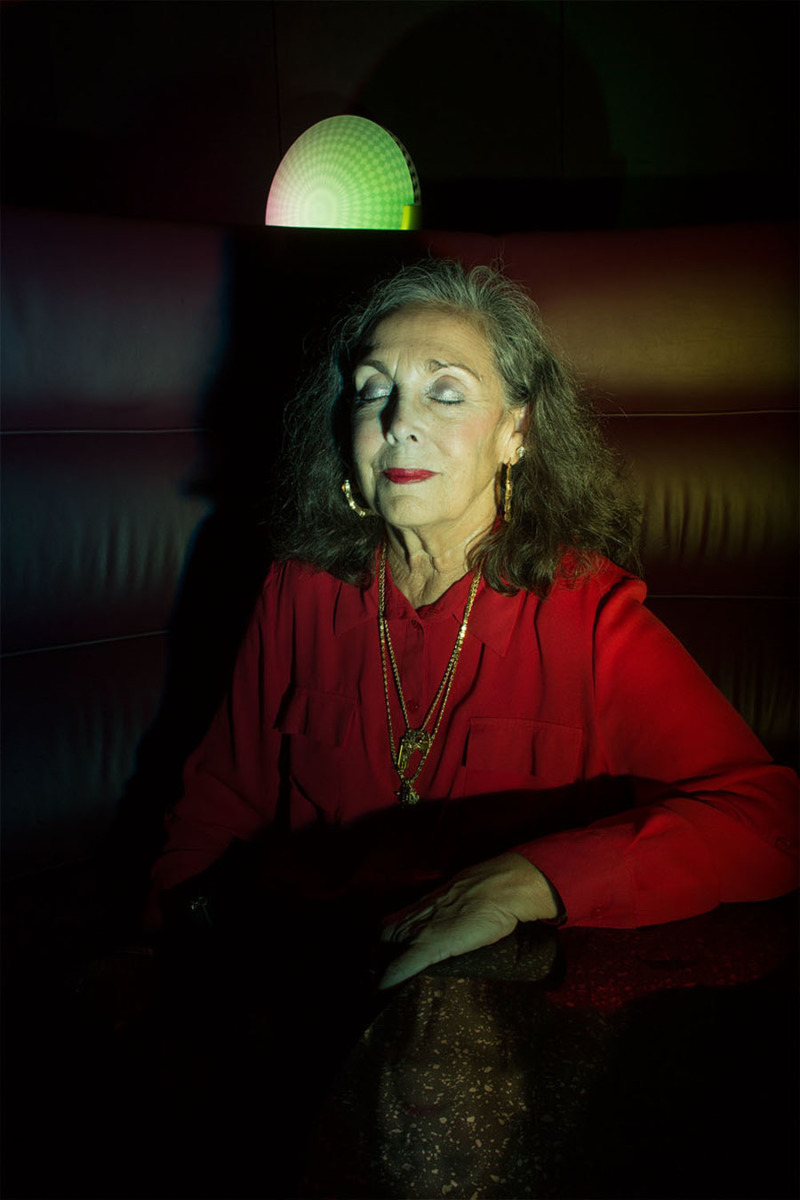
Within photography, the blending of fiction and truth always veers into the ambiguous. On one hand, it’s a weakness of the medium… yet on another it’s what creates such a powerful platform for metaphor. Since your work crosses between video, installation and music, would you elaborate on why you chose photography as a means to approach the concepts present in Purple Domino?
Purple Domino happened in this way photographically as a result of the limitations of these spaces and my explorations within and around. Existing artistically within different casinos and their sister spaces acted as a fantastical set and radical gesture. With my most recent installation of the work, I’m excited about combining the images in a gallery window with a short wave radio transmitter that broadcasts from the window in order to knock out a popular radio station as people drive by. It is as if the women themselves take over the airwaves and force people to look.
Their power comes from their full participation in the photographs. Their makeup, jewellery, perfume, and fashion speak to coded choices and presents femininity without its bondage to youth.
Quickly what comes to mind are: Reno, Nevada; Panther Groupers (strange and beautiful fish!); Liquid Sky and its soundtrack; and one of the most important things to me is the journal my Grandmother left me after she passed away (hidden in a cabinet with my name written on it)—within it stories and memories I had never heard.

